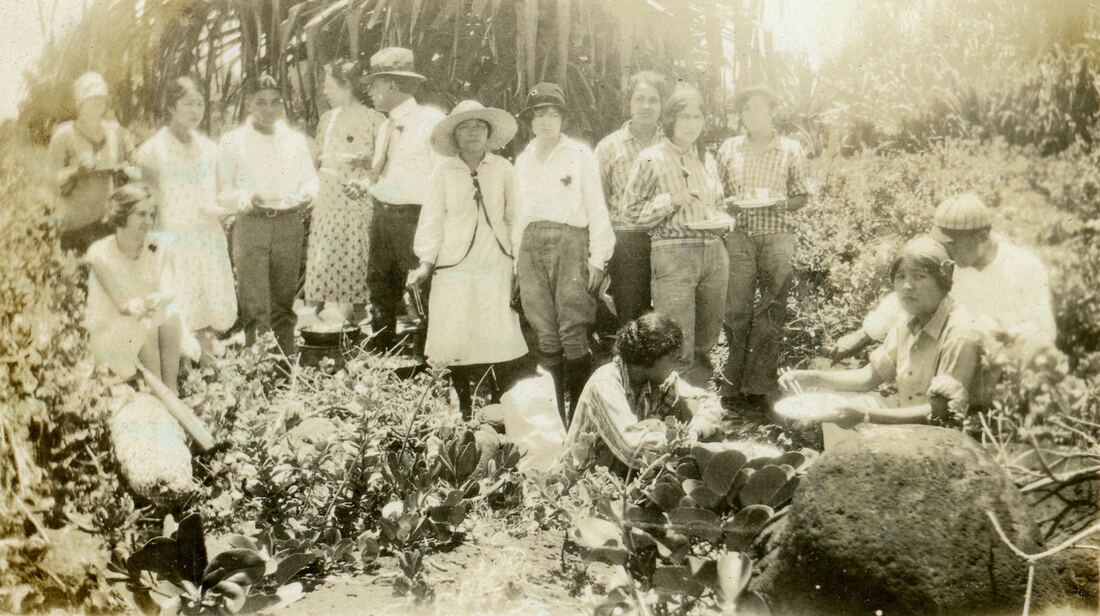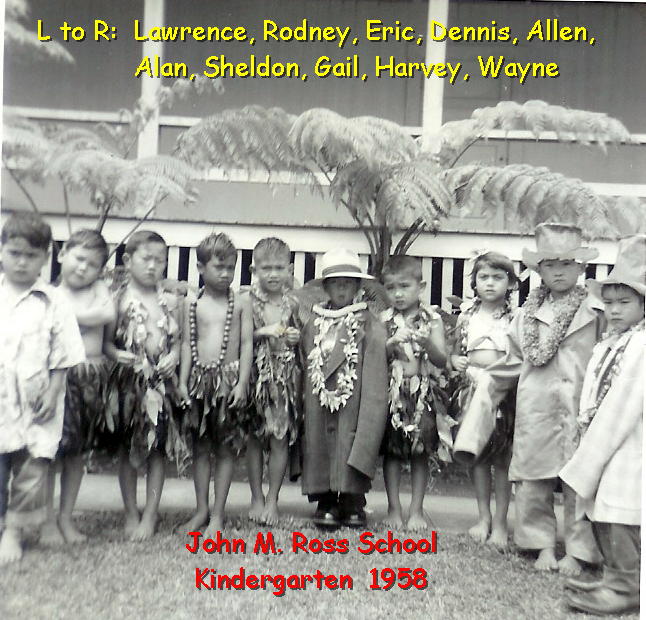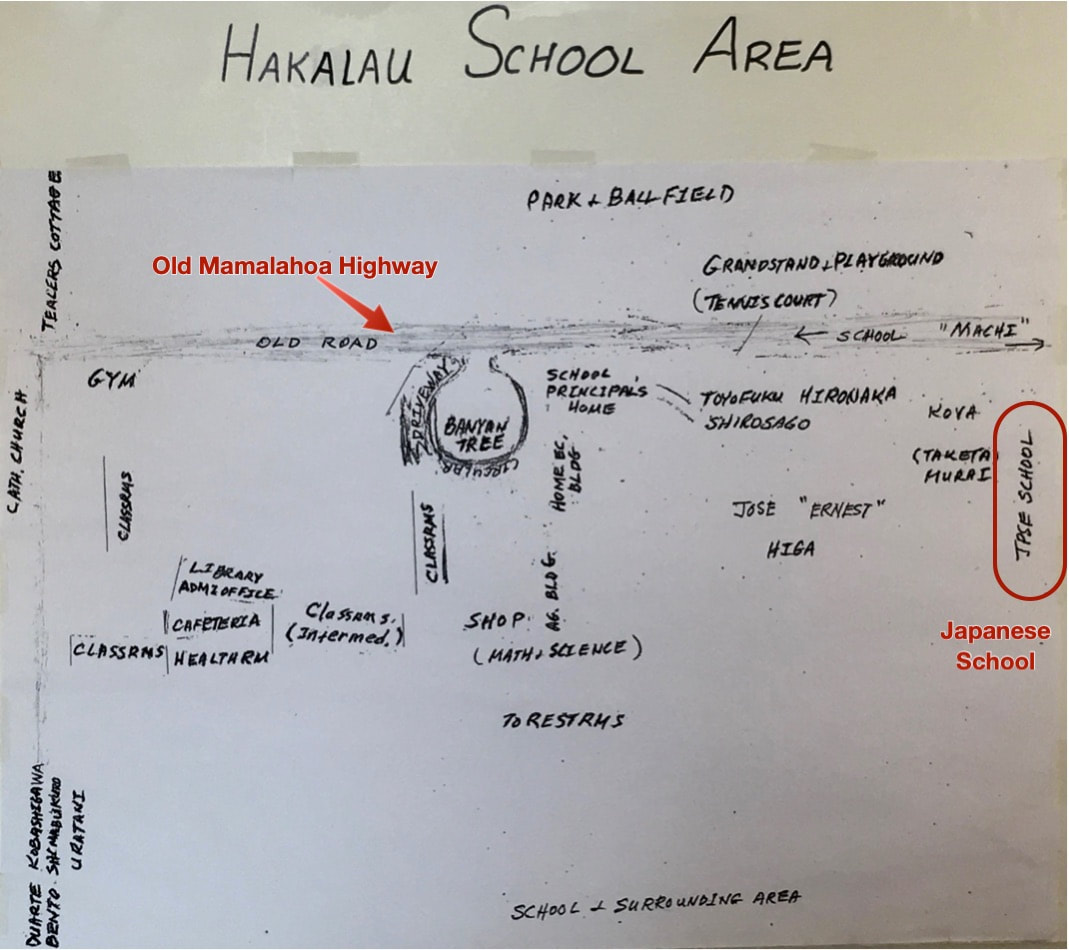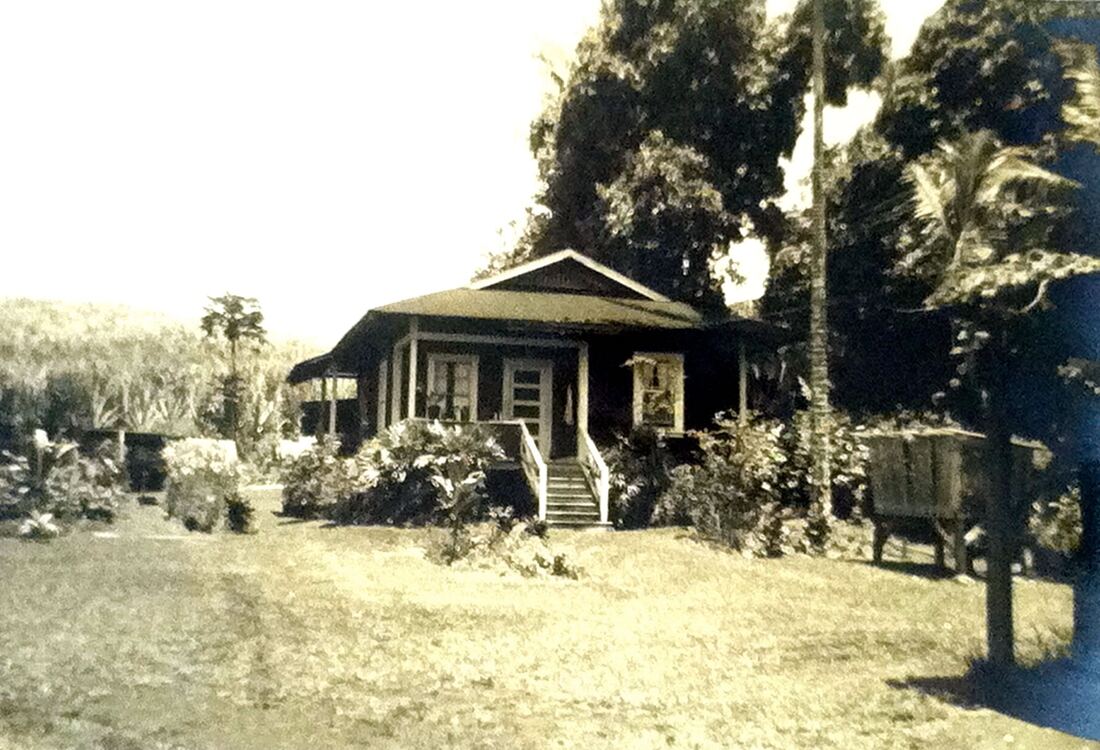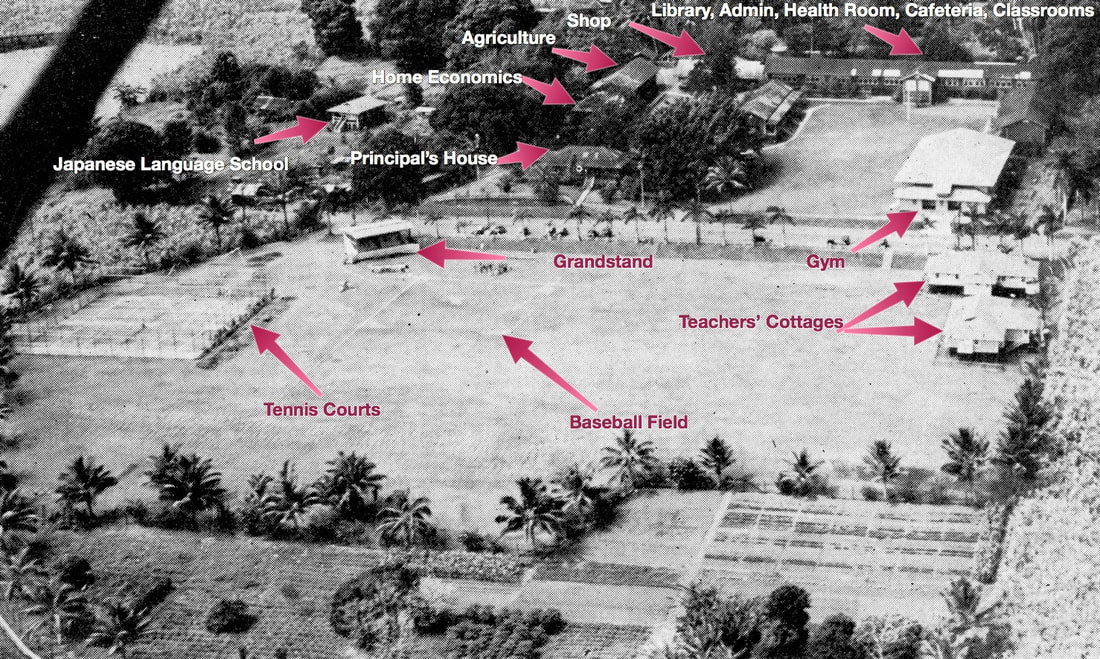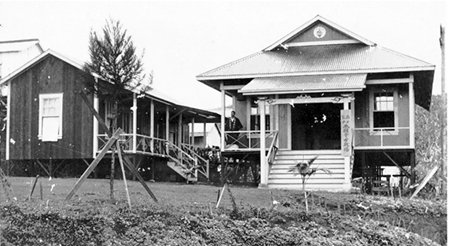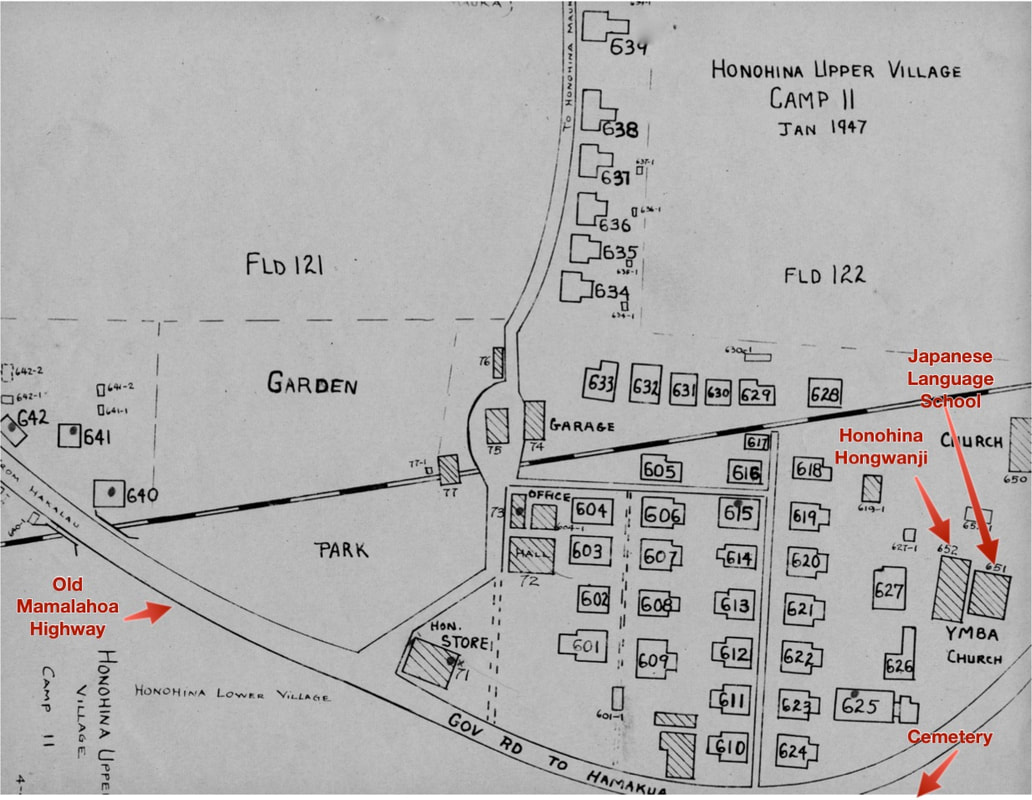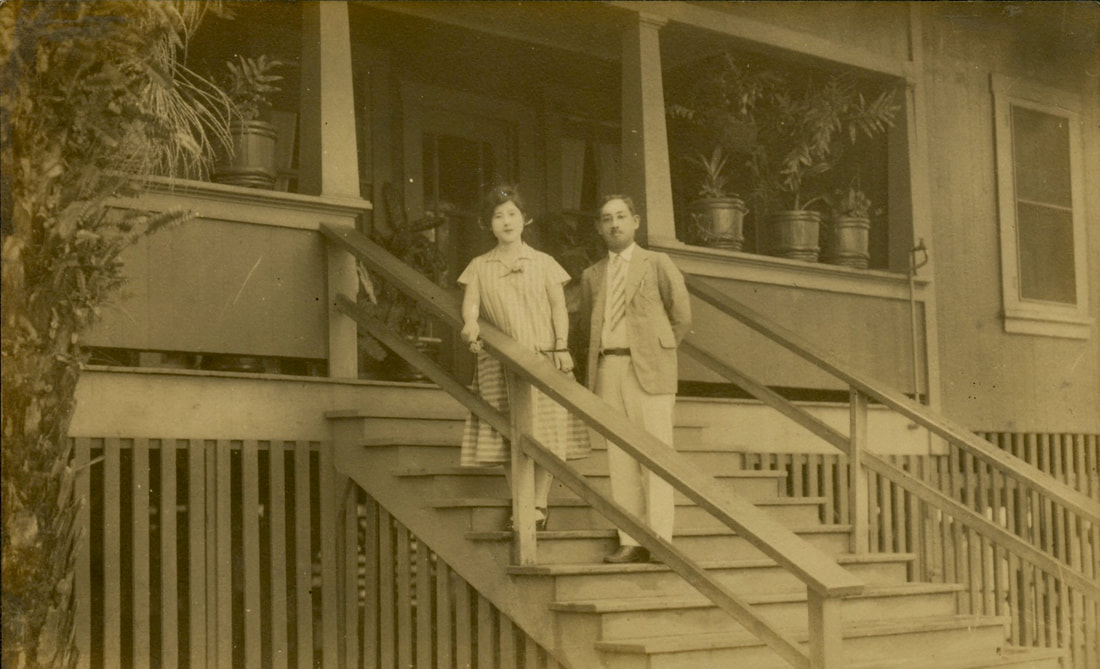English Language Schools under the Department of Education
Hakalau School
|
The country school which grew from a small one-room house to an educational plant of considerable size was an important entity in the plantation community. Hakalau School, in addition to its function of teaching the three R's, also became the district's center for many social and athletic activities until it was closed and consolidated with Kalanianaole School in Papaikou in 1972.
|
John M. Ross School
|
The Ninole School was originally called Pohakupuka School and the first principal was a Mrs. Bridgewater prior to 1904. In 1932 Ninole School closed after a long and colorful history and the buildings were moved to a new 7.58 acre parcel next to Nanue stream and the new Ninole School, now called John M. Ross School, was open to students. The school consisted of one large structure which had 6 classrooms, a principal’s office, a dispensary and a library. There were 2 additional buildings, one for the principal and his family and the other for teachers that needed housing.
|
Japanese Language Schools
A good overview and history of Japanese language schools is provided in the Densho Encyclopedia.
The role of the Japanese language schools in Hawaii changed over time and is described in Kodomo no tame ni: For the sake of the children:
The role of the Japanese language schools in Hawaii changed over time and is described in Kodomo no tame ni: For the sake of the children:
One of the first language schools had been founded in 1896...Soon the idea of teaching the Japanese language to Nisei became extremely popular, especially since the schools facilitated communication and cultural transmission within the Issei family and provided a child-care center for working parents. With the proliferation of Buddhist institutions, the Japanese language schools came under the control of a more "Japanesey" leadership. Besides instruction in the language, reverence for the emperor and a strong attachment to things Japanese dominated the curriculum of the Buddhist-operated language schools. Many young Nisei would therefore attend not only public school, learning American culture and language, but would study the ways of Japan at the language schools. (Source: Dennis M. Ogawa, Kodomo no tame ni: For the sake of the children, The University of Hawaii Press, 1978, p. 141)
Hakalau
The Hakalau Jodo Mission began in July 1904 when Soma Senri, its first minister, rented one room in a bakery in Down Camp (Hakalau Lower Camp) to start teaching Japanese language. This bakery, the site of the initial Japanese language school, was owned by Shotaro Shimizu.
A member of Sei Ren Ji temple in Yashiro Mura, Oshima Gun, Yamaguchi-prefecture, named Hakalau Upper Camp resident, Yokoyama Kikujiro, and others to help him establish a school with $600. The school opening ceremony was held on November 3rd, 1904, the auspicious day of Japanese Emperor’s birthday. There were 50 students at the time. Members asked Minister Soma to find a wife in order to expand the mission of teaching and education.
With the budget of $2,000, Minister Soma quickly embarked on construction of a church and school building. The Hakalau Plantation provided one-acre land with no rent or time limit. The two-story church of 30 feet by 20 feet was built on the site of the current Hakalau Jodo Mission. The church was located on the top floor and the school on the lower floor. On February 19, 1905, Minister Soma performed the ceremony to receive the sacred Buddha statue into the temple as well as a mourning ceremony for soldiers killed in Russo-Japanese War.
On July 8, 1905, Minister Soma’s wife joined him. At this point, the the Hakalau Plantation Manager offered a small monthly stipend for the church. The wife’s arrival advanced the educational effort. The number of students staying at the dormitory quickly grew to over a dozen and some of the applicants had to be declined due to lack of space.
The Hakalau Japanese Language School continued to grow.
A member of Sei Ren Ji temple in Yashiro Mura, Oshima Gun, Yamaguchi-prefecture, named Hakalau Upper Camp resident, Yokoyama Kikujiro, and others to help him establish a school with $600. The school opening ceremony was held on November 3rd, 1904, the auspicious day of Japanese Emperor’s birthday. There were 50 students at the time. Members asked Minister Soma to find a wife in order to expand the mission of teaching and education.
With the budget of $2,000, Minister Soma quickly embarked on construction of a church and school building. The Hakalau Plantation provided one-acre land with no rent or time limit. The two-story church of 30 feet by 20 feet was built on the site of the current Hakalau Jodo Mission. The church was located on the top floor and the school on the lower floor. On February 19, 1905, Minister Soma performed the ceremony to receive the sacred Buddha statue into the temple as well as a mourning ceremony for soldiers killed in Russo-Japanese War.
On July 8, 1905, Minister Soma’s wife joined him. At this point, the the Hakalau Plantation Manager offered a small monthly stipend for the church. The wife’s arrival advanced the educational effort. The number of students staying at the dormitory quickly grew to over a dozen and some of the applicants had to be declined due to lack of space.
The Hakalau Japanese Language School continued to grow.
Wailea
Another Japanese Language School was on the Wailea side, near the Hakalau School, as shown is the aerial photo of Hakalau School as well as the hand-drawn map produced by one of the participants in the Hakalau School and Reunion. At this point, November 2019, very little history about this school has been compiled for this website. We are interested in historical detail and pictures. If you have information about this Japanese Language School, please contact us!
Honohina
There was also a Japanese Language School next to the Honohina Hongwanji. As of November 2019, very little information about this school has been compiled for this website. We are interested in historical detail and pictures. If you have information about this Japanese Language School, please contact us!
Ninole Japanese School, known as Ninole Dokuritsu Gakko
|
Nearby was the Ninole Japanese School, properly known as Ninole Dokuritsu Gakko, which consisted of a residence and a 3-classroom building. In 1932, the Japanese school split into two and moved next to the John M. Ross School site. The Ninole Dokuritsu Gakko site was located on the Hilo side of Waiehu stream. The new Honohina Hongwanji Gakuen was built on the Hamakua side of Waiehu stream. As of November 2019, very little information about this school has been compiled for this website. We are interested in historical detail and pictures. If you have information about this Japanese Language School, please contact us!
|

